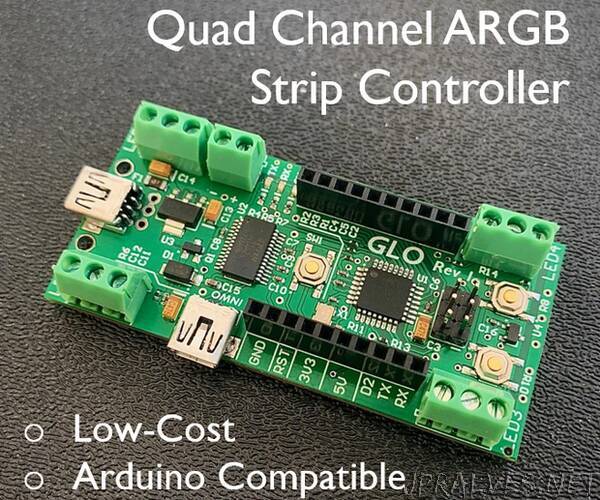
“With LED technology and DIY Electronics being more available to everyone with each passing year, the demand for maker-friendly LED controllers has been on the rise. Currently, low-cost RGB strip drivers are available but offer no flexibility or external I/O to play with. Another option is to use an Arduino UNO or similar microcontroller. However, this approach is not suitable for more rugged/compact projects, such as mounting LEDs on a bicycle or under a car.
To meet this demand, as well as to teach others the basics of RGB Lighting, I have designed Glo, a low-cost, customizable LED controller. The board is smaller than an Arduino UNO and contains all the ports needed to run multiple LED strips, eliminating the need for extra wires. Additionally, it uses heavy-duty terminal blocks for the LED and power connections, ensuring that the wires won’t come unplugged in more rugged applications.
Glo is also Arduino-compatible, meaning that it can be interfaced with external modules, sensors, or processors. The possibilities for your lighting projects are endless!
This instructable will highlight the design and fabrication processes of Glo, so you can build your own! If you are interested in the project, check out omnilabs.com for Glo Rev 2, which will launch on Kickstarter in March 2021! The new chip is WiFi compatible, works with Amazon Echo/Google Home, and has plenty of I/O to add modifications.
Supplies:
For this project, you will need:
PCB design software. Autodesk Eagle, Kicad, and Altium Designer are some good examples. For this Instructable, I will be using Altium.
Soldering iron
Board components (more on this later)
3D Printer (optional, will be used to print an enclosure for the device).”
